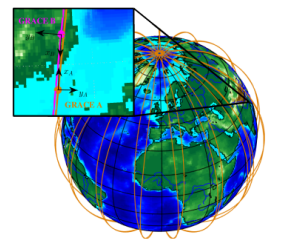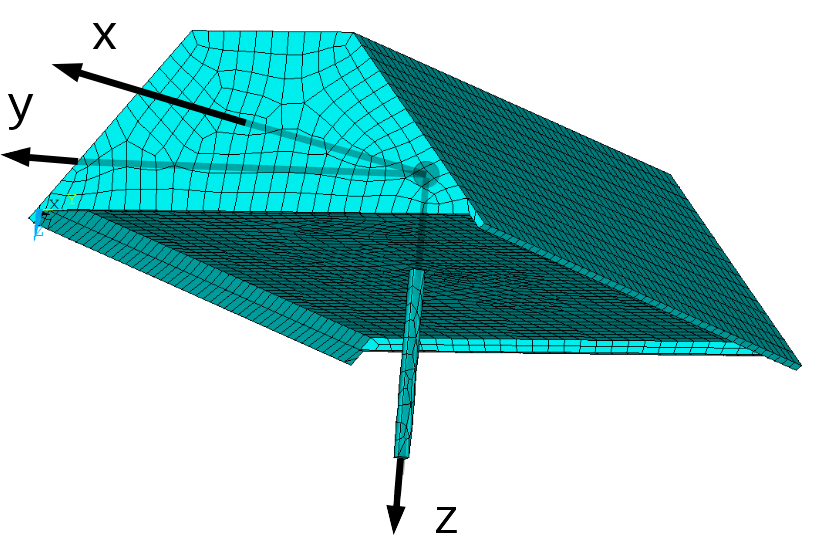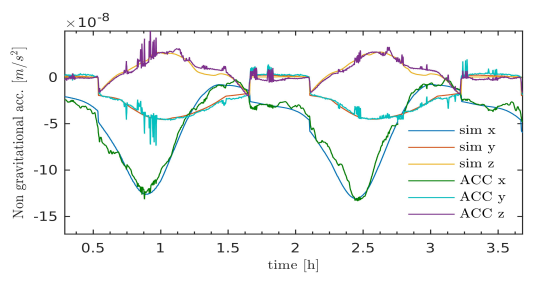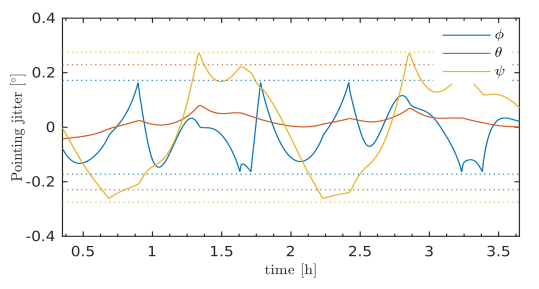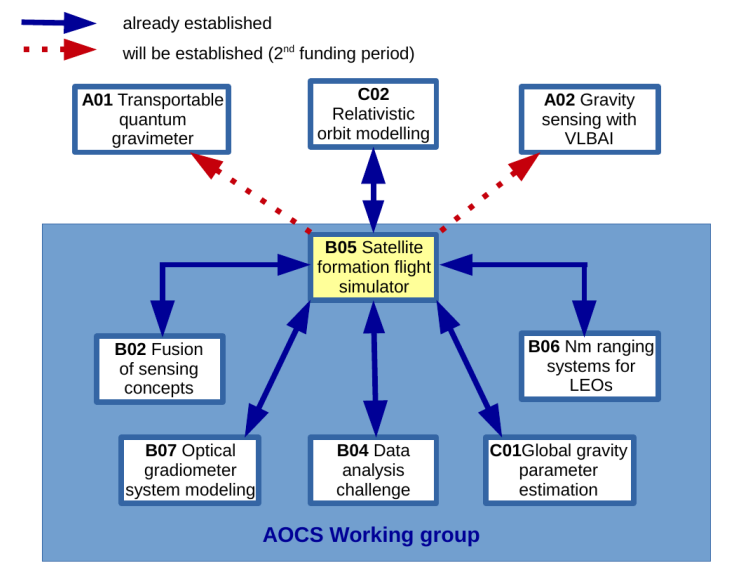In project B05, we develop a satellite formation flight simulator named XHPS (eXtended High Performance satellite dynamics Simulator) and investigate its applications to satellite gravimetry missions. The simulator is designed to offer a generic approach which can be adapted to wide range of geodetic measurement concepts including future missions with a swarm of satellites. The primal motivation of the development of XHPS focuses on the preparation of future gravimetry missions within the scope of this SFB.
The highest fidelity is achieved by employing 3D finite element (FE) model of the satellites of interest describing details of geometry and material properties together with the up-to-date environmental models. This generic procedure enables us to obtain entangled coupling effects between satellite platform and ambient environment as well as the resulting dynamics of the satellite affecting the scientific measurement on-board.
In parallel, XHPS challenges to extend the limit of the numerical precision which is a major bottleneck to perform the mission design and analysis for future missions at the unprecedented level of measurement accuracy.
These two features make XHPS the state-of-the-art simulator providing the capability to evaluate the performance of sensors, to perform a tradeoff between mission concepts, and to optimize mission outcome.
The figures on the right are showing a snapshot of the orbits of two GRACE satellites and FE model of GRACE employed in the simulation. A swarm of satellites can be simultaneously computed and XHPS incorporates the actual geometry of the satellite from FE model to compute the non-gravitational accelerations.
FE interface is to be extended to analyze further complex interactions within the satellite platform, such as thermo-structural deformations and temperature distributions over the satellite structure. These extensions aim at revealing indirect interactions between environment and payload measurement.
Figures 03 and 04 are the exemplary results of obtained non-gravitational accelerations compared with GRACE-L1B accelerometer (ACC) data and attitude pointing jitter with respect the line-of-sight vector, respectively. The non-gravitational acceleration in the left figure contains solar radiation pressure, air drag, and albedo radiation from Earth. XHPS accepts attitude and orbit control system implementations including needed controller, and this is of high interest for improving the analysis of the measurement data of current and future missions.
The long-term / general goal of the project is the development of the means to characterize and evaluate the performance of space-based geodetic measurement systems by using a modular high precision modeling approach and a full simulation of system, sensors, environment and mission profile.
During the first funding period, B05 initiated the AOCS working group which came out to be an essential platform for interdisciplinary communication between the projects. Furthermore, we are providing infrastructural support for B02, B04, B06 and B07 by providing simulated orbit and system data and work together with C01. For the future, we plan to establish additional cooperations with A01 and A02 on the expected synergies for the development of quantum sensor model within the XHPS library.
Principal Investigators
Zentrum für angewandte Raumfahrttechnologie und Mikrogravitation
Zentrum für angewandte Raumfahrttechnologie und Mikrogravitation
Zentrum für angewandte Raumfahrttechnologie und Mikrogravitation
Zentrum für angewandte Raumfahrttechnologie und Mikrogravitation

